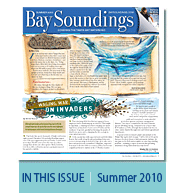 |
||||||||

Helping Make the Vision a Reality: One Bay Leaders to Collaborate with Local Governments
By Manny Pumariega, Executive Director
Tampa Bay Regional Planning Council
Occasionally over the course of Tampa Bay’s history, visionary leaders have stepped forward and changed the face of the region. Notable examples include the leaders who transformed Tampa International Airport from an abandoned WWII airfield to the nation’s finest airport or the visionaries who built a top public university on a sandspur-studded site north of town.
Today, leaders across the Tampa Bay region have the opportunity to make lasting changes in their own communities as we move forward with the visions described by thousands of residents in the One Bay visioning process.
Originally conceived in 2007 when Florida’s population was still growing at a rate of approximately 400 people a day, One Bay describes the Tampa Bay of 2050 in a series of scenarios. While population growth has recently leveled off, planners still expect the region to grow to about seven million people over the next 40 years, nearly doubling today’s population.
More than 10,000 current residents participated in the One Bay planning process, soundly rejecting the “business as usual” growth patterns that would result in significant impacts to water resources, wetlands and wildlife habitat – as well a dramatic increase in the average time required to commute. (For more information, see the pull-out section in the April issue of Bay Soundings or visit www.myonebay.com.)
The effort to transform the One Bay vision to reality takes a major step forward this Fall with a series of meetings to assess local development plans. Although some communities already have key elements included in their comprehensive plans, we need to build a detailed framework that takes us from “business as usual” planning to the Tampa Bay we envision for the future.
Our initial focus will be the four counties and 20 municipalities that are members of the Tampa Bay Regional Planning Council and represent 99% of the region’s population. We’ll ask for formal resolutions of support for the One Bay vision, then work with them on an individual basis to help develop transportation, land use and policy plans to be consistent with the One Bay Regional Vision and Strategic Regional Policy Plan.
Working with the Southwest Florida Water Management District and the Tampa Bay Partnership, we’ll also reach outside the boundaries of the TBRPC, encompassing communities as far north as Crystal River and as far south as Englewood.
We already have working programs that highlight the success of this regional focus. The TBRPC itself was the first regional planning council in Florida, established in 1962, when officials from St. Petersburg, Clearwater and Tampa recognized the need for regional coordination.
TBRPC's Agency on Bay Management has brought representatives of communities in the Tampa Bay watershed together since 1985. Tampa Bay is now one of the few estuaries in the world where water quality is improving even as populations in its watershed continue to grow. The Regional Planning Council also was responsible for legislative approval of the Tampa Bay Estuary Specialty License Tag and has generated funds to continue restoration of Florida’s largest open-water estuary.
Across the region, a critical part of the One Bay vision is compact development, particularly in mixed-use communities where people can live, work and play without leaving their neighborhoods. Compact development is absolutely necessary for mass transit and it’s a primary method of protecting water resources, wetlands and wildlife habitat that residents have defined as their top priority. The Tampa Bay Area Regional Transportation Agency was established in 2007 to coordinate regional transportation facilities that will assist in creating compact, mixed-use communities.
The One Bay team will be working with local governments to provide the data, analysis and tools they need to make decisions today that support long-term sustainability. We’ll also continue to work with residents and community organizations to help set the stage for a Tampa Bay where population and employment growth occur in patterns that protect our valuable natural resources.
One Bay members:
- Southwest Florida Water Management District
- Tampa Bay Area Regional Transportation Authority
- Tampa Bay Estuary Program
- Tampa Bay Partnership
- Tampa Bay Regional Planning Council
- Urban Land Institute, Tampa Bay chapter
Our Guiding Principles:
- Preserving natural resources; balancing jobs and housing for an affordable quality of life.
- Clustering higher-density developments on transportation corridors.
- Maximizing mobility using multi-modal transportation.
- Attracting higher-paying jobs and strengthening economic-development initiatives.
- Preserving farmland and sustaining the role of agriculture.
- Promoting quality communities to create a sense of place by uniquely clustering higher-density mixed-use development, organized around transportation corridors.
